Ankylosing Spondylitis
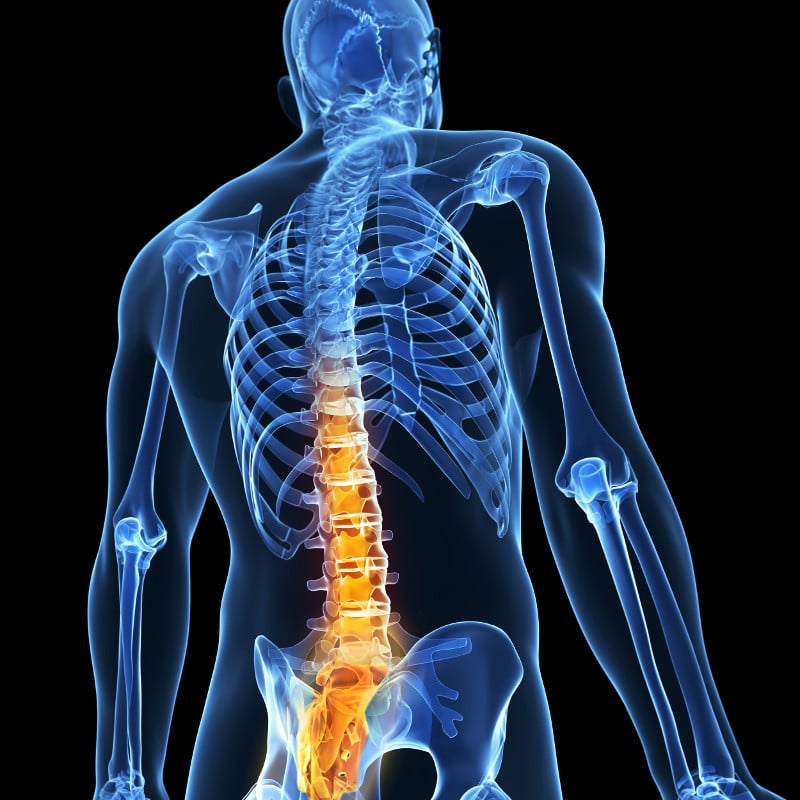
Patients with AS may experience stiffness and significant pain in the lower back and sacroiliac joints.4,5 Inflammatory back pain in AS generally worsens during periods of inactivity, especially at night, which can make it difficult for many patients to sleep well. In addition, morning stiffness lasting for at least 30 minutes is common in patients with AS.5 Extra-spinal involvement, including enthesitis, uveitis, dactylitis, inflammatory bowel disease, and psoriasis, may also occur in these patients.6,7 Uncontrolled disease can lead to bone growth and spinal fusion, further restricting range of motion and resulting in spinal curvature.5,6 If the rib and joints/costovertebral joint are involved, patients may also experience difficulty breathing.4,6 Symptoms of AS have a major impact on patients’ quality of life, with pain and stiffness limiting their ability to work, exercise, and socialize.6,8,9
Although historically considered a disease that almost exclusively affected men, AS is increasingly being recognized in women.10,11 Women with AS may experience disease differently than men, reporting more joint pain, more peripheral involvement, and worse quality of life than men.10,12 Women may also have a slower progression of radiographic damage vs men.13 For women with AS who become pregnant, approximately 60% report persistent or worsening disease activity during pregnancy, and about 90% experience a flare within 1 year of giving birth.14
1. Amarasekara DS, Yu J, Rho J. Bone Loss Triggered by the Cytokine Network in Inflammatory Autoimmune Diseases. J Immunol Res. 2015;2015:832127.
2. Helmick CG, Felson DT, Lawrence RC, et al. National Arthritis Data Workgroup. Estimates of the prevalence of arthritis and other rheumatic conditions in the United States. Part I. Arthritis Rheum. 2008;58(1):15-25.
3. U.S. and World Population Clock. United States Census Bureau website. Accessed July 25, 2018.
4. Sieper J, Rudwaleit M, Baraliakos X, et al. The Assessment of SpondyloArthritis international Society (ASAS) handbook: a guide to assess spondyloarthritis. Ann Rheum Dis. 2009;68 Suppl 2:ii1-44.
5. Braun J, Sieper J. Ankylosing spondylitis. Lancet. 2007;369(9570):1379-1390.
6. Boonen A, van der Linden SM. The burden of ankylosing spondylitis. J Rheumatol Suppl. 2006;78:4-11.
7. Rudwaleit M, van der Heijde D, Landewe R, et al. The development of Assessment of SpondyloArthritis international Society classification criteria for axial spondyloarthritis (part II): validation and final selection. Ann Rheum Dis. 2009;68(6):777-783.
8. Hamilton-West KE, Quine L. Living with Ankylosing Spondylitis: the patient's perspective. J Health Psychol. 2009;14(6):820-830.
9. van der Esch M, van 't Hul AJ, Heijmans M, Dekker J. Respiratory muscle performance as a possible determinant of exercise capacity in patients with ankylosing spondylitis. Aust J Physiother. 2004;50(1):41-45.
10. Lee W, Reveille JD, Weisman MH. Women with ankylosing spondylitis: a review. Arthritis Rheum. 2008;59(3):449-454.
11. Haroon NN, Paterson JM, Li P, Haroon N. Increasing proportion of female patients with ankylosing spondylitis: a population-based study of trends in the incidence and prevalence of AS. BMJ Open. 2014;4(12):e006634.
12. Reed MD, Dharmage S, Boers A, Martin BJ, Buchanan RR, Schachna L. Ankylosing spondylitis: an Australian experience. Intern Med J. 2008;38(5):321-327.
13. Baraliakos X, Listing J, von der Recke A, Braun J. The natural course of radiographic progression in ankylosing spondylitis: differences between genders and appearance of characteristic radiographic features. Curr Rheumatol Rep. 2011;13(5):383-387.
14. Ostensen M, Husby G. A prospective clinical study of the effect of pregnancy on rheumatoid arthritis and ankylosing spondylitis. Arthritis Rheum. 1983;26(9):1155-1159.
Ankylosing Spondylitis (AS) is a chronic, inflammatory, autoimmune condition that affects an estimated 1,700,000 adults in the United States.1-3
Crohn’s disease
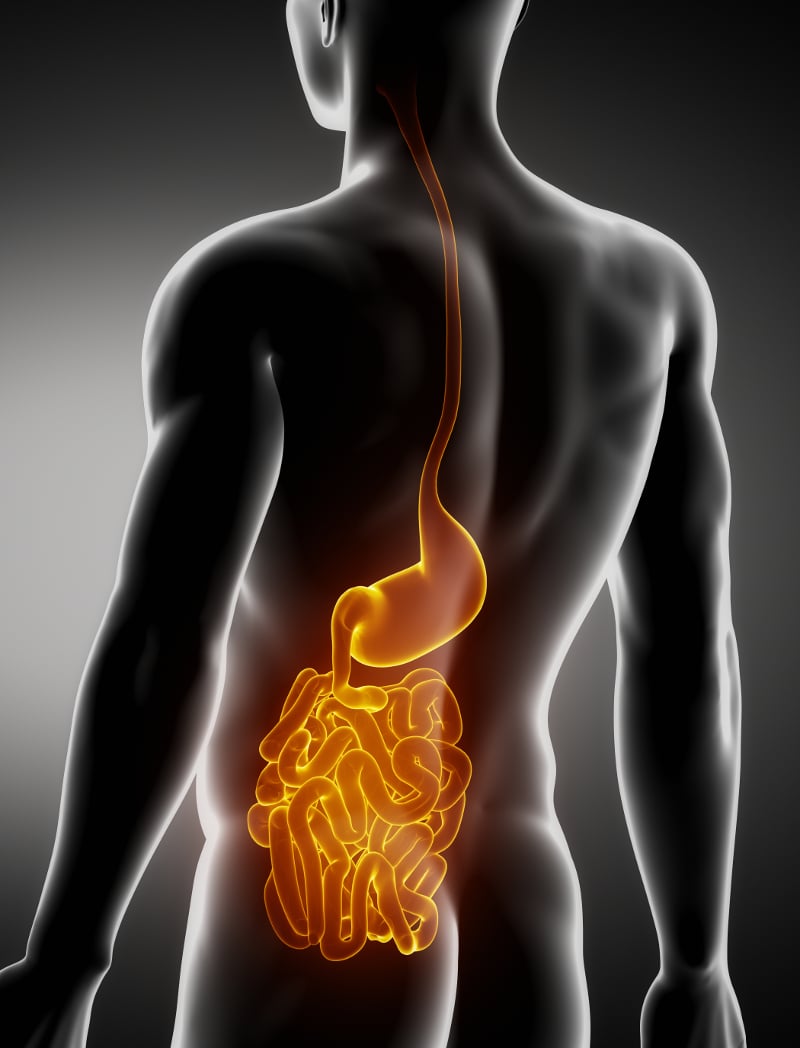
Patients with CD can experience diarrhea, fever, nausea, abdominal pain, and severe weight loss.1 Chronic intestinal inflammation leads to progressive and destructive disease associated with damage to the mucosa.3 Over time, patients may develop stricturing or penetrating complications of disease, and more than 50% of individuals with CD require surgery within 10 years of diagnosis.4,5 The symptoms of CD may also result in significant anxiety, stress, depression, and isolation.1,6 Although CD does not significantly shorten life expectancy, patients are subject to a lifetime of suffering because of their symptoms, severe limitations on their social and family life, hospitalizations, surgeries, and an overall reduced quality of life.5,7,8
The prevalence of CD is approximately equal in men and women.9 Women with CD may experience disease differently than men, exhibiting lower quality of life and a greater risk of depression and anxiety.10 For women with CD who become pregnant, approximately one-third experience worsening disease activity.11 Studies have shown that active disease and flares during pregnancy are associated with negative pregnancy outcomes of preterm delivery and low birth weight infants.12 Furthermore, approximately 20% of women with CD flare within 6 months of giving birth.13
1. Crohn’s & Colitis Foundation of America. The Facts About Inflammatory Bowel Diseases.
http://www.ccfa.org/assets/pdfs/updatedibdfactbook.pdf. Published November 2014.
Accessed July 25, 2018.[OM1].
2. Kappelman MD, Moore KR, Allen JK, Cook SF. Recent trends in the prevalence of Crohn's disease and ulcerative colitis in a commercially insured US population. Dig Dis Sci. 2013;58(2):519-525.
3. Neurath MF. Cytokines in inflammatory bowel disease. Nat Rev Immunol. 2014;14(5):329-342.
4. Cosnes J, Cattan S, Blain A, et al. Long-term evolution of disease behavior of Crohn's disease. Inflamm Bowel Dis. 2002;8(4):244-250.
5. Domenech E, Manosa M, Lobaton T, Cabre E. Optimizing post-operative Crohn's disease treatment. Ann Gastroenterol. 2014;27(4):313-319.
6. Loftus EV, Jr., Guerin A, Yu AP, et al. Increased risks of developing anxiety and depression in young patients with Crohn's disease. Am J Gastroenterol. 2011;106(9):1670-1677.
7. Bernklev T, Jahnsen J, Lygren I, Henriksen M, Vatn M, Moum B. Health-related quality of life in patients with inflammatory bowel disease measured with the short form-36: psychometric assessments and a comparison with general population norms. Inflamm Bowel Dis. 2005;11(10):909-918.
8. Baumgart DC, Sandborn WJ. Crohn's disease. Lancet. 2012;380(9853):1590-1605.
9. Loftus CG, Loftus EV, Jr., Harmsen WS, et al. Update on the incidence and prevalence of Crohn's disease and ulcerative colitis in Olmsted County, Minnesota, 1940-2000. Inflamm Bowel Dis. 2007;13(3):254-261.
10. Hauser G, Tkalcic M, Stimac D, Milic S, Sincic BM. Gender related differences in quality of life and affective status in patients with inflammatory bowel disease. Coll Antropol. 2011;35 Suppl 2:203-207.
11. Hashash JG, Kane S. Pregnancy and Inflammatory Bowel Disease. Gastroenterol Hepatol (N Y). 2015;11(2):96-102.
12. Bush MC, Patel S, Lapinski RH, Stone JL. Perinatal outcomes in inflammatory bowel disease. J Matern Fetal Neonatal Med. 2004;15(4):237-241.
13. Pedersen N, Bortoli A, Duricova D, et al. The course of inflammatory bowel disease during pregnancy and postpartum: a prospective European ECCO-EpiCom Study of 209 pregnant women. Aliment Pharmacol Ther. 2013;38(5):501-512.
Crohn’s disease (CD) is a chronic inflammatory condition of the gastrointestinal tract and is estimated to affect more than 780,000 people in the United States.1,2
Non-radiographic Axial Spondyloarthritis
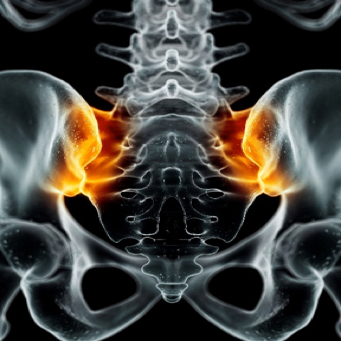
Patients with nr-axSpA may experience chronic lower back pain and inflammation of the sacroiliac joints.5,6 Additionally, lack of sleep and fatigue are commonly reported by these patients.7 Extra-spinal manifestations of disease, including uveitis, psoriasis, inflammatory bowel disease, dactylitis, peripheral arthritis, and enthesitis may also occur.7,8 Symptoms of nr-axSpA can have a significant impact on patients’ function, with patients experiencing reduced ability to work and lower work productivity.9 Patients may also experience anxiety, depression, and an overall reduced quality of life.10
Unlike in the related disease state of ankylosing spondylitis, the prevalence of nr-axSpA is similar in men and women.1-5,11 However, women can experience disease activity differently than men.12 Despite being less likely to experience radiographic progression, women experience greater functional impairments than men.12 Additionally, women with early disease have greater subjective disease activity and are more likely to have widespread pain than men.12,13 Women with definite sacroiliitis may also experience more fatigue and peripheral involvement than men.12 The overlap of clinical features with fibromyalgia can also complicate the diagnosis and treatment of axSpA in women, especially given the predominance of fibromyalgia in women.14
1. Garg N, van den Bosch F, Deodhar A. The concept of spondyloarthritis: where are we now? Best Pract Res Clin Rheumatol. 2014;28(5):663-672.
2. Reveille JD, Witter JP, Weisman MH. Prevalence of axial spondylarthritis in the United States: estimates from a cross-sectional survey. Arthritis Care Res (Hoboken). 2012;64(6):905-910.
3. U.S. and World Population Clock. United States Census Bureau website. Accessed June 26, 2018.
4. Baraliakos X, Braun J. Non-radiographic axial spondyloarthritis and ankylosing spondylitis: what are the similarities and differences? RMD Open. 2015;1(Suppl 1):e000053. doi: 10.1136/rmdopen-2015-000053.
5. Boonen A, Sieper J, van der Heijde D, et al. The burden of non-radiographic axial spondyloarthritis. Semin Arthritis Rheum. 2015;44(5):556-562.
6. Rudwaleit M, van der Heijde D, Landewe R, et al. The development of Assessment of SpondyloArthritis international Society classification criteria for axial spondyloarthritis (part II): validation and final selection. Ann Rheum Dis. 2009;68(6):777-783.
7. Boonen A, van der Linden SM. The burden of ankylosing spondylitis. J Rheumatol Suppl. 2006;78:4-11.
8. de Winter JJ, van Mens LJ, van der Heijde D, Landewe R, Baeten DL. Prevalence of peripheral and extra-articular disease in ankylosing spondylitis versus non-radiographic axial spondyloarthritis: a meta-analysis. Arthritis Res Ther. 2016;18:196. doi:1186/s13075-016-1093-z.
9. Mease PJ, Heijde DV, Karki C, et al. Characterization of Patients With Ankylosing Spondylitis and Nonradiographic Axial Spondyloarthritis in the US-Based Corrona Registry. Arthritis Care Res (Hoboken). 2018;70(11):1661-1670.
10. Erol K, Gok K, Cengiz G, Kilic G, Kilic E, Ozgocmen S. Extra-articular manifestations and burden of disease in patients with radiographic and non-radiographic axial spondyloarthritis. Acta Reumatol Port. 2018;43(1):32-39.
11. Deodhar A, Mease PJ, Reveille JD, et al. Frequency of Axial Spondyloarthritis Diagnosis Among Patients Seen by US Rheumatologists for Evaluation of Chronic Back Pain. Arthritis Rheumatol. 2016;68(7):1669-1676.
12. Tournadre A, Pereira B, Lhoste A, et al. Differences between women and men with recent-onset axial spondyloarthritis: results from a prospective multicenter French cohort. Arthritis Care Res (Hoboken). 2013;65(9):1482-1489.
13. Slobodin G, Reyhan I, Avshovich N, et al. Recently diagnosed axial spondyloarthritis: gender differences and factors related to delay in diagnosis. Clin Rheumatol. 2011;30(8):1075-1080.
14. Wendling D, Prati C. Spondyloarthritis and fibromyalgia: interfering association or differential diagnosis? Clin Rheumatol. 2016;35(9):2141-2143.
Non-radiographic Axial Spondyloarthritis (nr-axSpA) is a chronic, inflammatory condition that affects an estimated 1,660,000 patients in the United States.1-4
Plaque Psoriasis
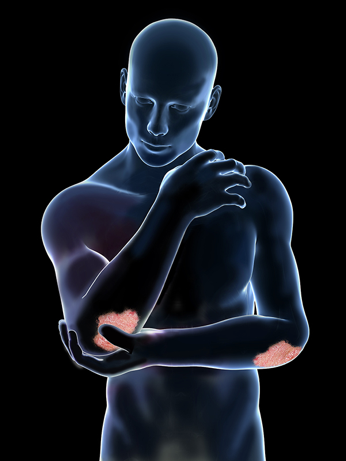
PSO is characterized by well-defined, raised plaques with silvery scales.2,3 The plaques commonly occur on the scalp; extensor surfaces such as the elbows and knees; and the lower back. Nail involvement is also common.2
The symptoms of PSO may negatively affect quality of life for people with this disease,4 increasing their risk of depression, anxiety, and suicidality vs the general population.5 Patients may also experience genital PSO, which can negatively affect many aspects of sexual health including sexual experience, frequency, and desire.6
The prevalence of PSO is approximately equal in men and women.1, Seventy-five percent of women with PSO present before the age of 40, which implies that many of them are of childbearing potential.7 Women with PSO may experience disease differently than men, with a higher prevalence of psychological and sexual distress and a higher level of stigmatization.8,9 For women with PSO who become pregnant, 21% report no change in disease activity and 23% report worsening disease activity (when measured by a physician via change in body surface area, 55% of pregnant patients with PSO have no change and 15% have worsening disease activity.)10 Furthermore, 65% of women with PSO report worsening disease activity after giving birth (when measured by a physician, 41% have worsening disease activity).10
1. Helmick CG, Lee-Han H, Hirsch SC, Baird TL, Bartlett CL. Prevalence of psoriasis among adults in the U.S.: 2003-2006 and 2009-2010 National Health and Nutrition Examination Surveys. Am J Prev Med. 2014;47(1):37-45.
2. Weller RP, Hunter JA, Savin JA, et al. Psoriasis. In: Clinical Dermatology. 4th ed. Malden, MA: Blackwell Publishing; 2008:54-70.
3. Haroon N, Ritchlin C. Mechanisms of bone remodeling in psoriatic arthritis. In: Adebajo A, Boehncke WH, Gladman DD, et al, eds. Psoriatic Arthritis and Psoriasis. Switzerland: Springer International Publishing; 2016:111-126.
4. Armstrong AW, Schupp C, Wu J, Bebo B. Quality of life and work productivity impairment among psoriasis patients: findings from the National Psoriasis Foundation survey data 2003-2011. PLoS One. 2012;7(12):e52935.
5. Kurd SK, Troxel AB, Crits-Christoph P, Gelfand JM. The risk of depression, anxiety, and suicidality in patients with psoriasis: a population-based cohort study. Arch Dermatol. 2010;146(8):891-895.
6. Cather JC, Ryan C, Meeuwis K, et al. Patients' Perspectives on the Impact of Genital Psoriasis: A Qualitative Study. Dermatol Ther (Heidelb). 2017;7(4):447-461.
7. Tauscher AE, Fleischer AB, Jr., Phelps KC, Feldman SR. Psoriasis and pregnancy. J Cutan Med Surg. 2002;6(6):561-570.
8. Colombo D, Cassano N, Bellia G, et al. Gender medicine and psoriasis. World J Dermatol. 2014;3(3):36-44.
9. Hawro M, Maurer M, Weller K, et al. Lesions on the back of hands and female gender predispose to stigmatization in patients with psoriasis. J Am Acad Dermatol. 2017;76(4):648-654.e642.
10. Murase JE, Chan KK, Garite TJ, Cooper DM, Weinstein GD. Hormonal effect on psoriasis in pregnancy and post partum. Arch Dermatol. 2005;141(5):601-606.
Plaque Psoriasis (PSO) is a chronic, noninfectious, inflammatory, autoimmune skin condition that affects an estimated 6.7 million adults in the United States.1,2
Psoriatic Arthritis
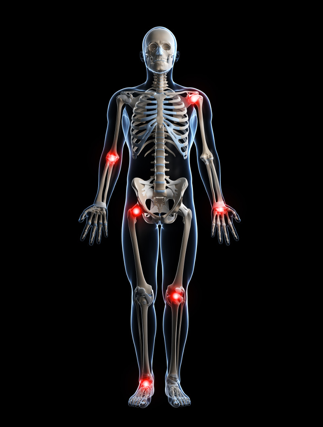
In addition to inflammation, swelling, and pain in the joints, patients with PsA may experience extra-articular manifestations, including enthesitis, dactylitis, uveitis, and inflammatory bowel disease.4 Importantly, PsA occurs in up to 30% of patients with psoriasis, and in 85% of patients, skin disease (ie, psoriasis) occurs before joint disease.5 If left untreated, PsA may result in persistent pain and inflammation, permanent joint damage, and disability.4,6 PsA is associated with a substantial disease burden negatively affecting physical function as well as patients’ ability to socialize due to embarrassment, self-consciousness, and/or depression.4 Although exercise is beneficial, patients with PsA may also be hesitant to exercise due to pain or stiffness.7
The prevalence of PsA is approximately equal in men and women.8 Women with PsA may experience disease differently than men.9 Women with PsA may experience more limitations in daily physical function, more severe fatigue, and worse quality of life than men. For women with PsA who become pregnant, approximately 32% have worsening or ongoing high disease activity during pregnancy, and approximately 40% experience a flare within 1 year postpartum.10
1. U.S. and World Population Clock. United States Census Bureau website. Accessed July 25, 2018.
2. Gladman DD. Psoriatic arthritis. Dermatol Ther. 2009;22(1):40-55.
3. Mease PJ. Measures of psoriatic arthritis: Tender and Swollen Joint Assessment, Psoriasis Area and Severity Index (PASI), Nail Psoriasis Severity Index (NAPSI), Modified Nail Psoriasis Severity Index (mNAPSI), Mander/Newcastle Enthesitis Index (MEI), Leeds Enthesitis Index (LEI), Spondyloarthritis Research Consortium of Canada (SPARCC), Maastricht Ankylosing Spondylitis Enthesis Score (MASES), Leeds Dactylitis Index (LDI), Patient Global for Psoriatic Arthritis, Dermatology Life Quality Index (DLQI), Psoriatic Arthritis Quality of Life (PsAQOL), Functional Assessment of Chronic Illness Therapy-Fatigue (FACIT-F), Psoriatic Arthritis Response Criteria (PsARC), Psoriatic Arthritis Joint Activity Index (PsAJAI), Disease Activity in Psoriatic Arthritis (DAPSA), and Composite Psoriatic Disease Activity Index (CPDAI). Arthritis Care Res (Hoboken). 2011;63 Suppl 11:S64-85.
4. Lee S, Mendelsohn A, Sarnes E. The burden of psoriatic arthritis: a literature review from a global health systems perspective. P T. 2010;35(12):680-689.
5. About psoriatic arthritis. National Psoriasis Foundation website.
https://www.psoriasis.org/about-psoriatic-arthritis. Accessed March 1, 2019.
6. Mease PJ, Armstrong AW. Managing patients with psoriatic disease: the diagnosis and pharmacologic treatment of psoriatic arthritis in patients with psoriasis. Drugs. 2014;74(4):423-441.
7. Lifestyle changes for psoriatic arthritis. NYU Langone Health website. http://nyulangone.org/conditions/psoriatic-arthritis-in-adults/treatments/lifestyle-changes-for-psoriatic-arthritis. Accessed March 1, 2019.
8. Gladman DD, Antoni C, Mease P, Clegg DO, Nash P. Psoriatic arthritis: epidemiology, clinical features, course, and outcome. Ann Rheum Dis. 2005;64 Suppl 2:ii14-17.
9. Eder L, Thavaneswaran A, Chandran V, Gladman DD. Gender difference in disease expression, radiographic damage and disability among patients with psoriatic arthritis. Ann Rheum Dis. 2013;72(4):578-582.
10. Polachek A, Li S, Polachek IS, Chandran V, Gladman D. Psoriatic arthritis disease activity during pregnancy and the first-year postpartum. Semin Arthritis Rheum. 2017;46(6):740-745.
Psoriatic Arthritis (PsA) is an inflammatory arthritis estimated to affect between 980,000 and 3,300,000 adults in the United States.1-3
Rheumatoid Arthritis
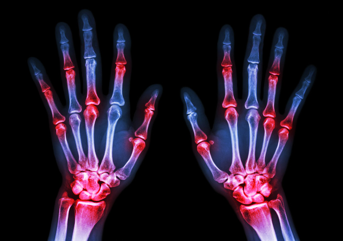
Although some patients may experience a mild illness with minimal joint damage, in most patients with uncontrolled disease activity, RA will follow a progressive course, leading to increasing degrees of joint destruction, pain, and functional decline.1 Patients may also experience fatigue, weight loss, and extra-articular involvement.1,4,5 These patients tend to be less productive at work or experience such severe symptoms that they are unable to work at all.5
The prevalence of RA is higher in women than in men: women are about 2.5 times more likely to develop RA. 6 Women with RA may also experience disease differently than men. Women with RA tend to have an earlier onset of disease, lower quality of life, and more depressive symptoms than men.6-8 For women with RA who become pregnant, approximately 47% experience persistent or worsening disease.9 A study has shown that women with RA who had severe disease had worse pregnancy outcomes (ie, preterm delivery and small for gestational age infants) than those who had mild or no disease.10 Furthermore, approximately 40% of women with RA flare within 6 months postpartum.11
1. Lipsky PE. Rheumatoid arthritis. In: Fauci AS, Langford CA, eds. Harrison’s Rheumatology. 2nd ed. New York, NY: McGraw-Hill Medical; 2010:82-99.
2. McInnes IB, Schett G. The pathogenesis of rheumatoid arthritis. N Engl J Med. 2011;365(23):2205-2219.
3. Arthritis-related statistics. Centers for Disease Control and Prevention website. http://www.cdc.gov/arthritis/data_statistics/arthritis-related-stats.htm. Accessed May 31, 2016.
4. Suresh E. Diagnosis of early rheumatoid arthritis: what the non-specialist needs to know. J R Soc Med. 2004;97(9):421-424.
5. Taylor PC, Moore A, Vasilescu R, Alvir J, Tarallo M. A structured literature review of the burden of illness and unmet needs in patients with rheumatoid arthritis: a current perspective. Rheumatol Int. 2016;36(5):685-695.
6. Myasoedova E, Crowson CS, Kremers HM, Therneau TM, Gabriel SE. Is the incidence of rheumatoid arthritis rising?: results from Olmsted County, Minnesota, 1955-2007. Arthritis Rheum. 2010;62(6):1576-1582.
7. Matcham F, Scott IC, Rayner L, et al. The impact of rheumatoid arthritis on quality-of-life assessed using the SF-36: a systematic review and meta-analysis. Semin Arthritis Rheum. 2014;44(2):123-130.
8. Dowdy SW, Dwyer KA, Smith CA, Wallston KA. Gender and psychological well-being of persons with rheumatoid arthritis. Arthritis Care Res. 1996;9(6):449-456.
9. Nelson JL, Ostensen M. Pregnancy and rheumatoid arthritis. Rheum Dis Clin North Am. 1997;23(1):195-212.
10. Bharti B, Lee SJ, Lindsay SP, et al. Disease Severity and Pregnancy Outcomes in Women with Rheumatoid Arthritis: Results from the Organization of Teratology Information Specialists Autoimmune Diseases in Pregnancy Project. J Rheumatol. 2015;42(8):1376-1382.
11. de Man YA, Dolhain RJ, van de Geijn FE, Willemsen SP, Hazes JM. Disease activity of rheumatoid arthritis during pregnancy: results from a nationwide prospective study. Arthritis Rheum. 2008;59(9):1241-1248.
Rheumatoid arthritis (RA) is a chronic, progressive, inflammatory, autoimmune disease affecting an estimated 1,500,000 adults in the United States.1-3